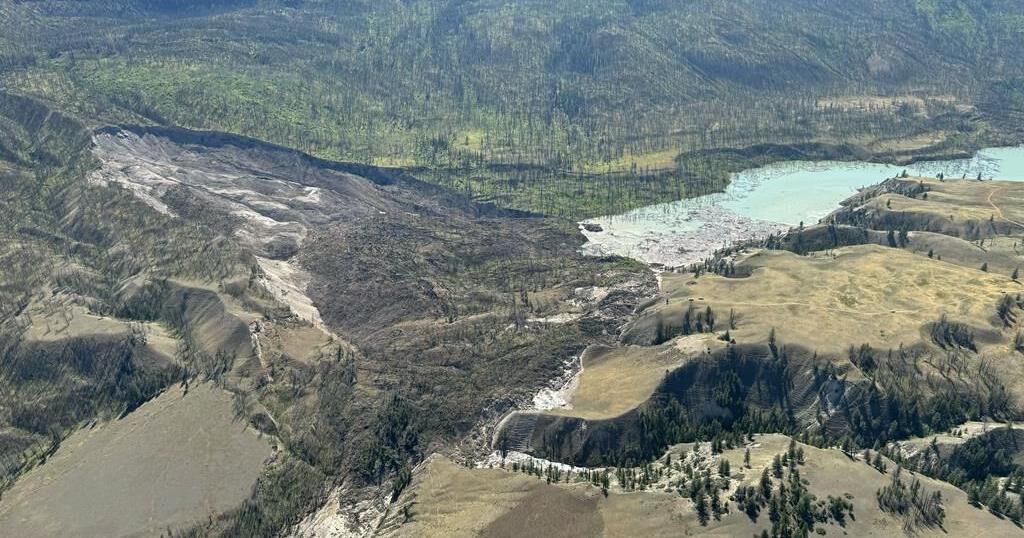WILLIAMS LAKE, B.C. – The chief of Williams Lake First Nation says a landslide of debris that has dammed the Chilcotin River in British Columbia’s central Interior has nearly doubled in size since Wednesday.
Chief Willie Sellars, who toured the slide site by helicopter Wednesday and Thursday, says the water is continuing to build on one side of the dam, while the other had “completely dried up” for about two kilometres.
Officials have said the water collecting behind the slide south of the city of Williams Lake could reach a level where it will start flowing over the debris, or it will erode the material, setting off a release.
They have estimated a release could come Friday or Saturday, and could set off dozens of evacuation orders and alerts downstream.
Evacuation orders span 107 square kilometres along the Chilcotin, and officials saying the slide poses an “immediate danger to life and safety.”
The nearby Tsilhqot’in National Government has declared a state of local emergency and warned people to stay away from the river.
The state of the river also has Interior Health relocated 21 patients out of a hospital and long-term care home in Lillooet to alternate areas.
Sellars says his community is about 45 minutes away from the slide, so an evacuation of the community likely won’t be necessary.
However, he says the region is of “massive cultural significance” to First Nation communities in the region, noting the slide will also affect navigation channels for salmon.
“(There’s) a lot of history, former village sites, burial grounds, and we need to make sure that we’re doing everything we can to document and protect those,” he says.
Sellars says “it’s hard to describe in words how massive this slide is, and how devastating it is,” adding he hasn’t received updated projections yet on when the dam may break.
“We want to get more information out and you know, our team is on it, and working collaboratively with the (Cariboo Regional District), the province and the federal government and I’m feeling very confident that we’re going to have that information soon.”
This report by The Canadian Press was first published Aug. 2, 2024.
